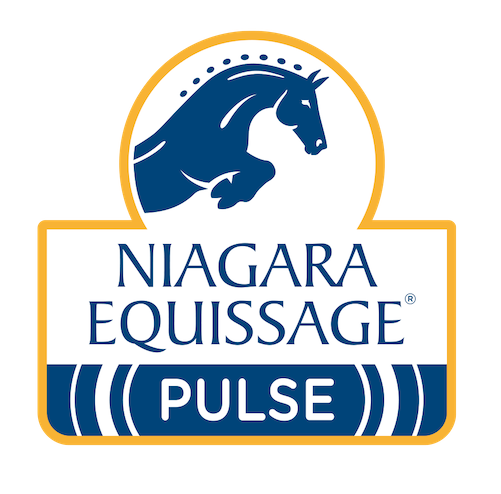Bursal Strains & Injuries
A bursal is an isolated fluid-filled sac. Some occur naturally at potential pressure points (e.g. point of hock) whereas others are acquired due to repetitive low grade trauma.
Bursal strains in horses occurs when damage to the bursae (sacs) around bony areas causes an over-production of the lubricating synovial fluid contained within the joints, and this shows as soft swelling or a bursal enlargement.
Bursal strains can cause;
- Bog spavins
- Wingalls
- Thoroughpins
They are not very serious but may, at the onset, be painful and cause lameness.
Treatment includes rest, cold hosing and massage. Capped hocks, elbows and knees are injuries caused by bursal strains and are often painless, although treatment is often advisable.
Can Niagara Equissage help with bursal strains?
Niagara Equissage can help considerably with all bursal strains and injuries.
Application
For Bog Spavins, please refer to the Bog Spavins page.
For Windgalls treatment, targeted daily use of the Hand Unit or use of the Tendon Boot, ideally in conjunction with the Back Pad, will keep the fluid up under control. The setting for the Hand Unit should be higher rather than lower so as to really move the fluid out of the joint capsule or tendon sheath as the case may be; a 5-10 minute treatment will be sufficient. If using the Hand Unit, try and keep it still rather than moving it around.
For thoroughpins, the Hand Unit should be used daily as part of the management routine on and around the site of the swelling for 5-10 minutes on a medium to high speed. As with other bursal swellings, try to avoid constantly moving the Hand Unit around.

Testimonials
See All- Olympic Eventing Silver Medalist
“An excellent piece of equipment which undoubtedly improves the horse’s performance.”
- Myerscough Racing, Ireland
After spending time working in many top yards around the globe, I have found Brandes Formula to be best product I have ever come across to bring a horse back to full health! Any horses that are not thriving seem to improve almost immediately from being put on this stuff. It clears out any mucus in their lungs, and after racing, the amount of time it takes for my horses to recover has halved and recuperation time after racing is minimized. My horses now look great and I would have no problem in recommending this product to anyone.
- Racehorse Trainer in Ireland
My entire yard has been on Brandes Formula for the past year. It is an excellent equine supplement that has helped to keep my horses healthy throughout the season. I would highly recommend Brandes Formula!

